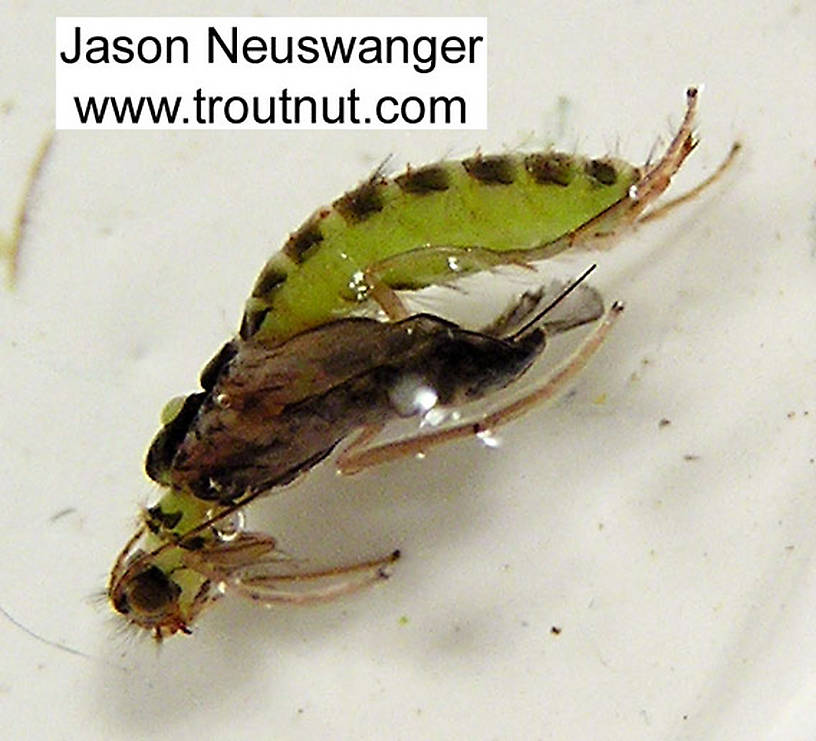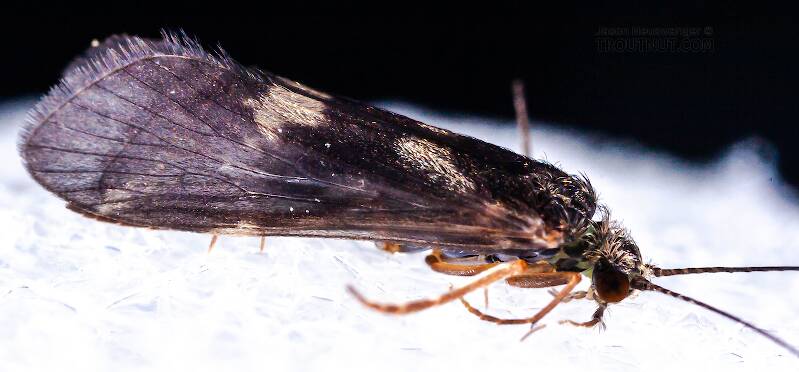
Blue-winged Olives
Baetis
Tiny Baetis mayflies are perhaps the most commonly encountered and imitated by anglers on all American trout streams due to their great abundance, widespread distribution, and trout-friendly emergence habits.
Featured on the forum

Troutnut is a project started in 2003 by salmonid ecologist Jason "Troutnut" Neuswanger to help anglers and
fly tyers unabashedly embrace the entomological side of the sport. Learn more about Troutnut or
support the project for an enhanced experience here.
Little Sister Sedges
This name reflects the close relationship of Cheumatopsyche to the better-known genus Hydropsyche, the Spotted Sedge.
This common name refers to only one genus. Click its scientific name to learn more.
Caddisfly Genus Cheumatopsyche
These are often called Little Sister Sedges.
To generalize broadly, Cheumatopsyche is found lower in the watershed than the similar genera Hydropsyche and Ceratopsyche. It is also smaller, but there is wide variation in size and color between the species. See the family Hydropsychidae page for life cycle details common to these genera.
The most important trout stream species are Cheumatopsyche campyla and Cheumatopsyche pettiti.
The most important trout stream species are Cheumatopsyche campyla and Cheumatopsyche pettiti.

I photographed this one recently dead. It's hard to keep caddis pupae alive for very long in a collection container.
See 5 more specimens...



